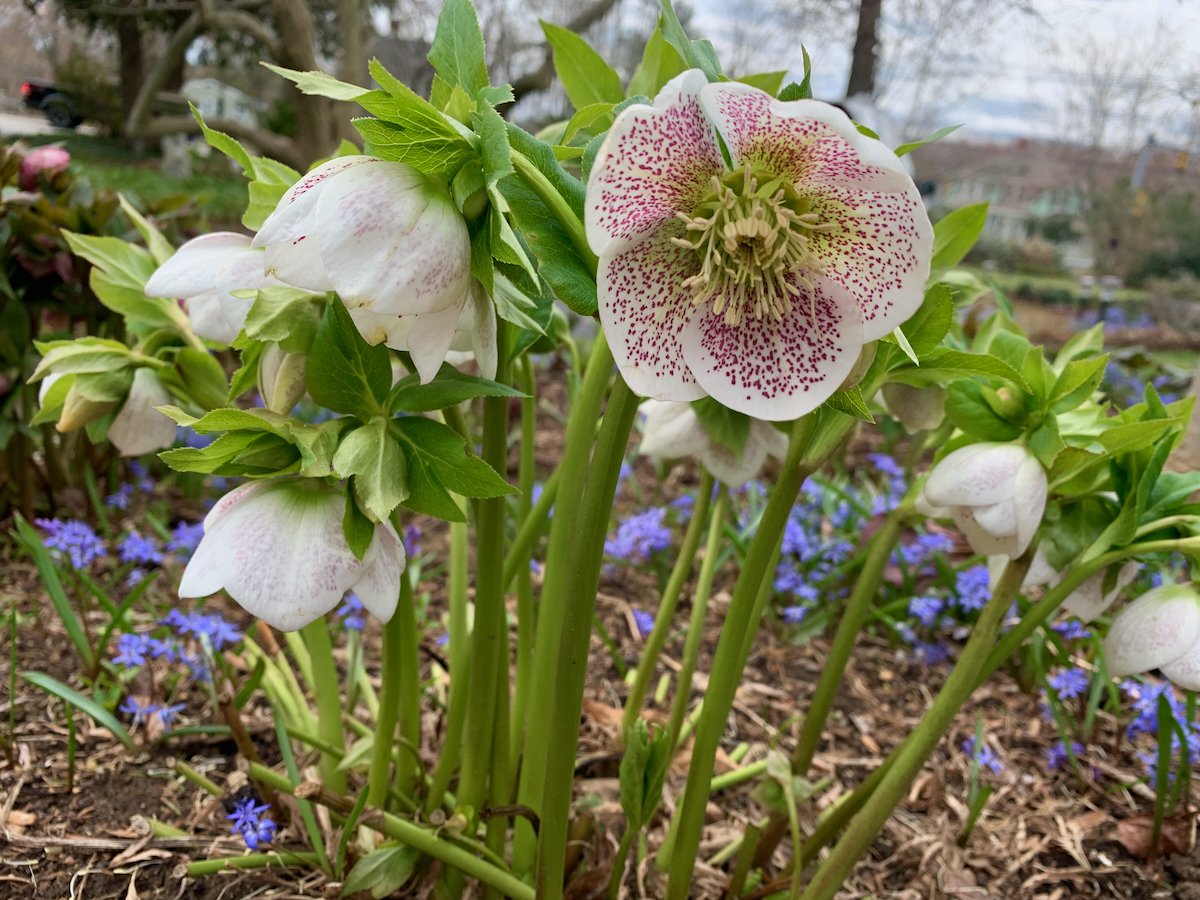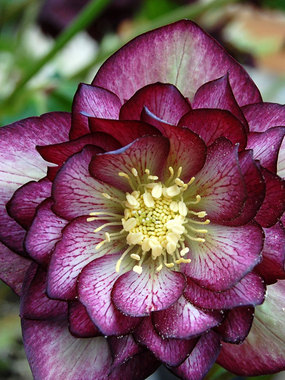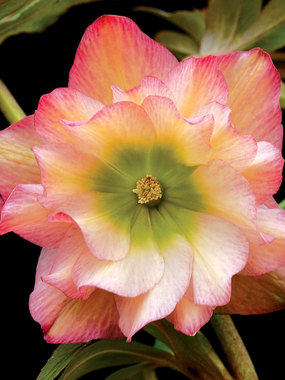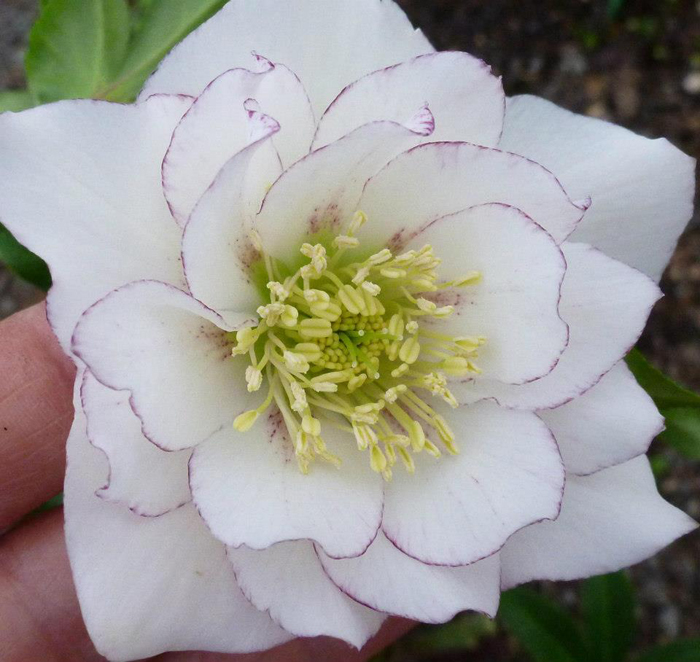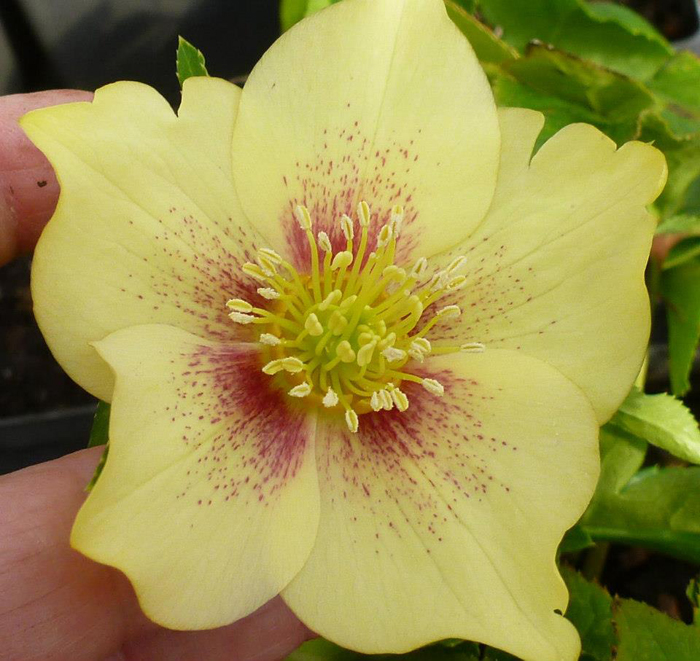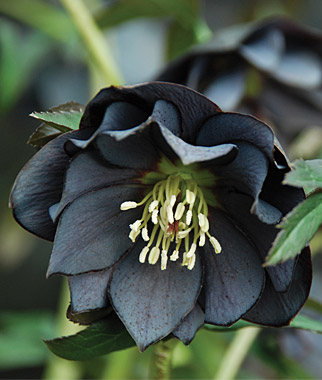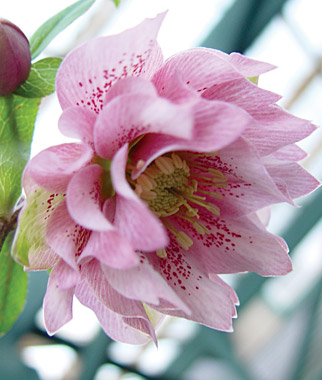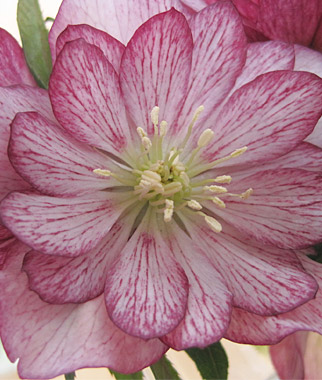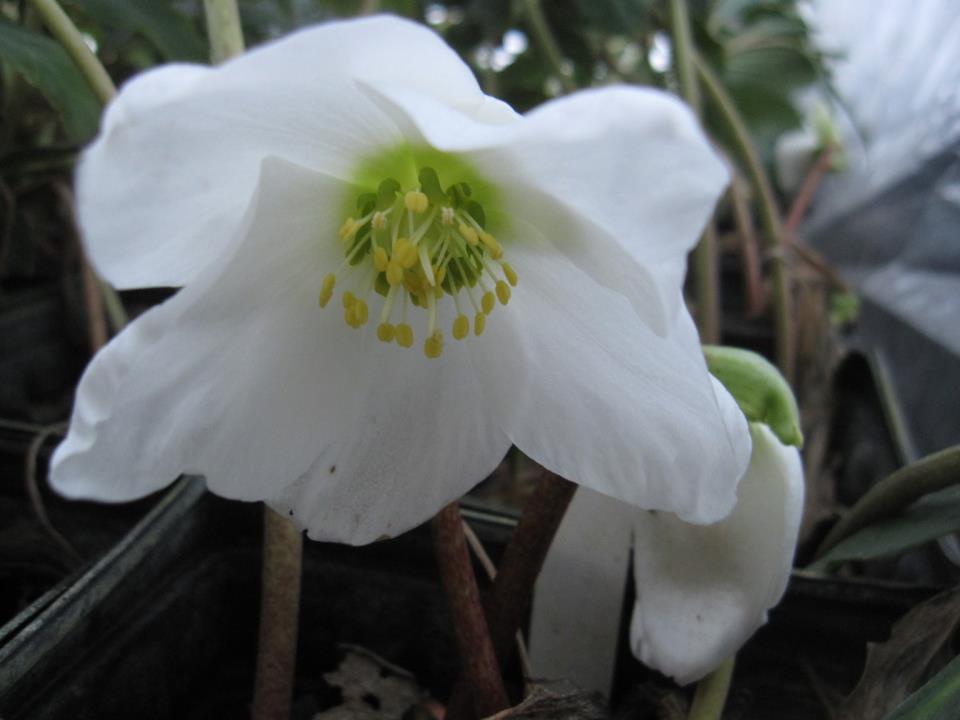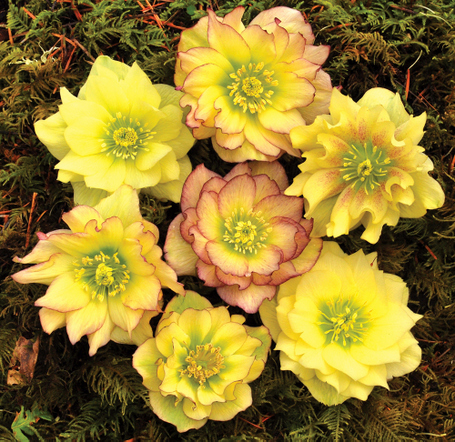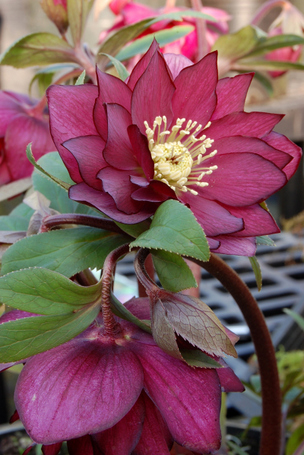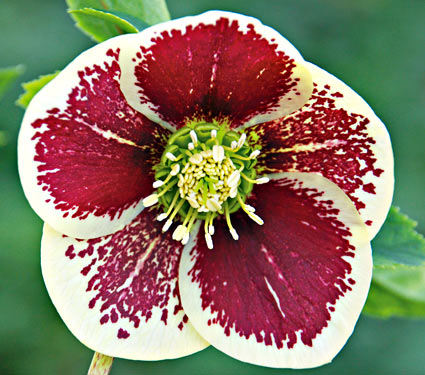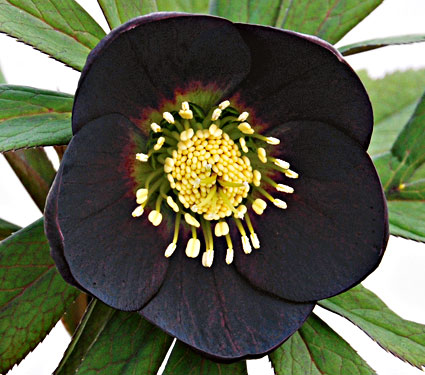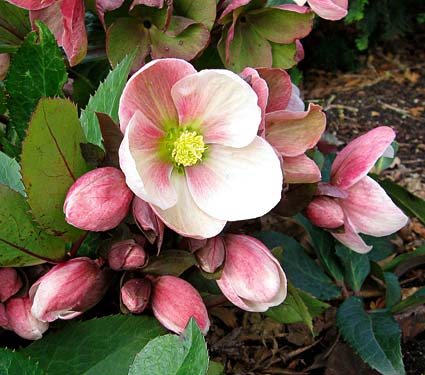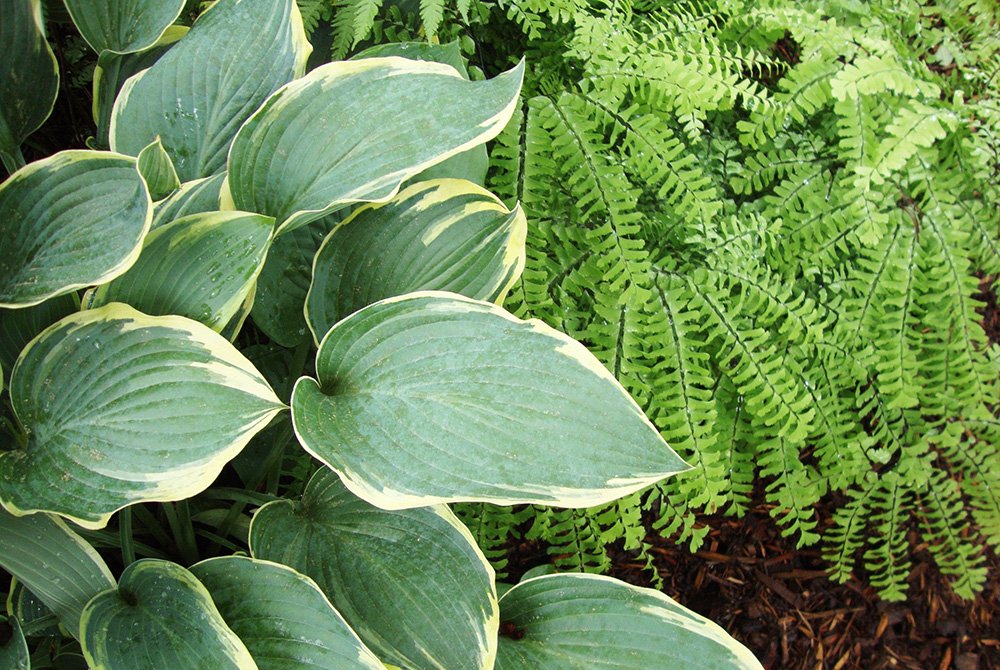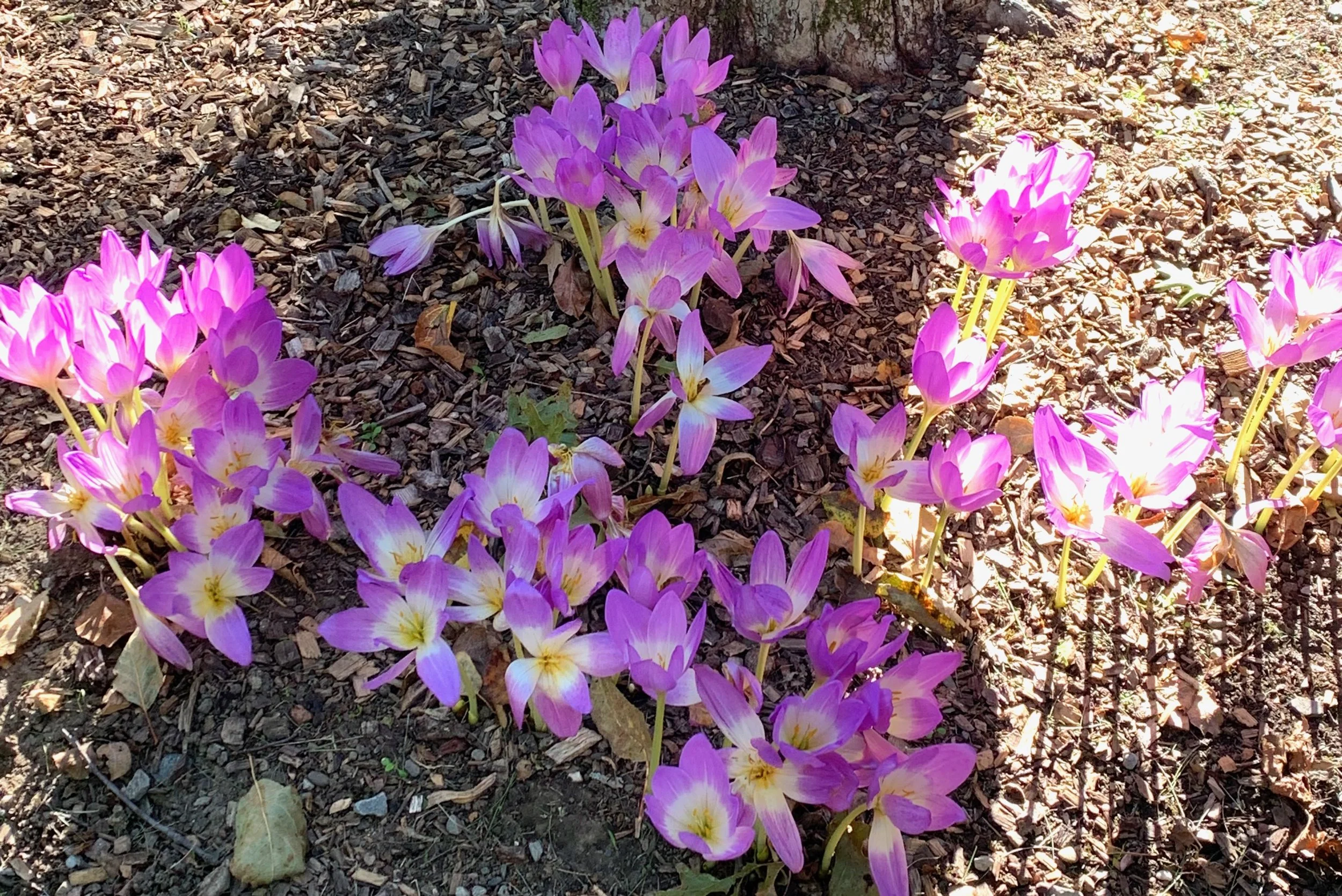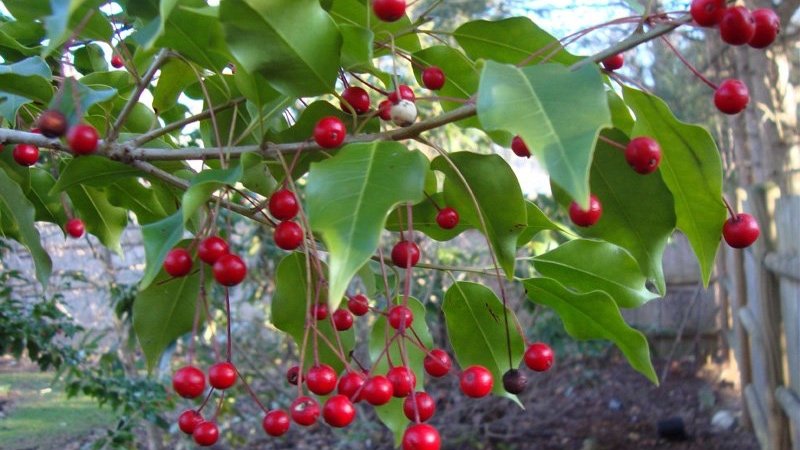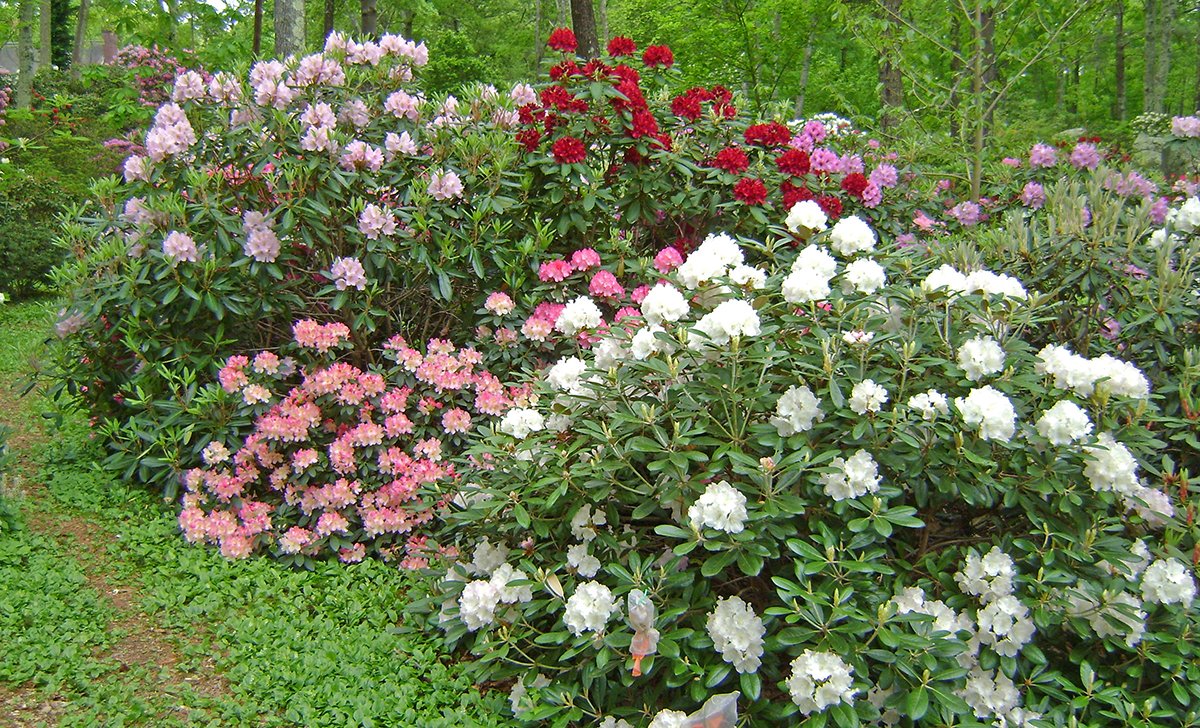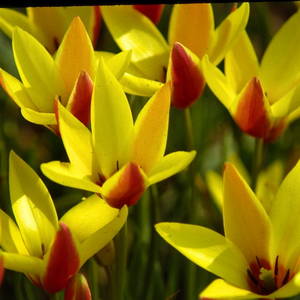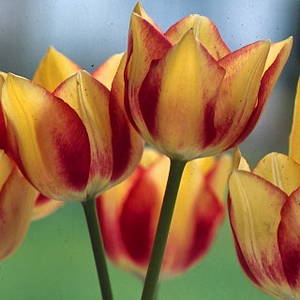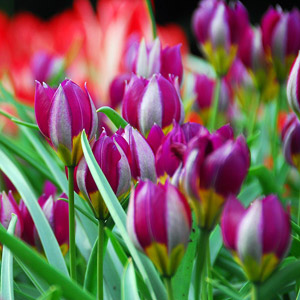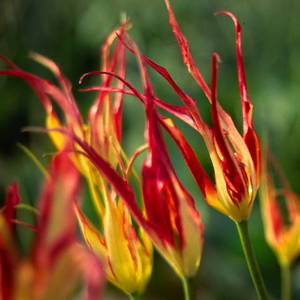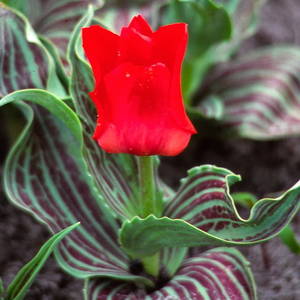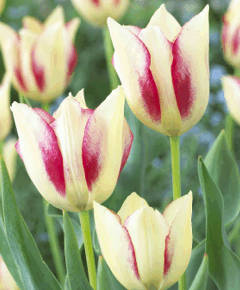Mayapple is yet another spring ephemeral – a perennial woodland wildflower that blooms early in the spring (May in Massachusetts), sets seed and then disappears by midsummer. Native in eastern North America south to Texas, Mayapple is hardy from zones 3 to 8, and makes a lovely addition to the woodland garden. The plants poke out of the ground looking like shiny little folded umbrellas, and then quickly unfold. From a single stem, each plant grows 12-18” tall, and produces one or two umbrella-like leaves that may be up to 12” in diameter. The leaves are deeply-divided, and a mass of Mayapples looks like a grove of miniature palm trees.
Mayapples are unique in that they have a solitary flower, which forms in the axil of the leaves. The nodding, white flower sports 6 to 9 waxy petals, and resembles an apple-blossom. (A rare new pink-flowered form, ‘Missoury May’, has recently been introduced and is available through specialty nurseries.)
The 2” blossom is usually hidden by the large leaves, so you have to get down low to appreciate its delicate beauty. After the flower is pollinated by bumblebees, each plant produces a fleshy, greenish lemon-shaped fruit (the apple) which turns golden when ripe. The fruit can be used for preserves and jellies, and apparently tastes like an overripe melon. However, since the rest of the plant—the leaves, roots, and unripe fruit—is highly toxic, I have not sampled it myself.
Mayapples are best grown in partial to full shade, in rich, well-drained, humusy soil. They will tolerate dry soil and drought once established. The plants colonize by underground stolons, forming dense mats. They do not like heavy competition from other plants. Although it is recommended that they be grown under deciduous trees, mine are growing well under the canopy of 75-foot tall Norway spruces. They are toughing it out in the company of mammoth hostas, bloodroot and Christmas ferns.
Mayapples may be propagated by root division while dormant in the fall. Each new division should have at least one bud. The plants will also self-sow in optimal growing conditions, but seedlings take several years to mature. Like trilliums, Mayapples should be enjoyed them in the garden, not in a vase. Picking the flowers is impossible without cutting the leaves as well, and the plants need the leaves to supply fuel for next year’s growth.
For gorgeous displays of Mayapples and other native woodland wildflowers, visit Garden in the Woods this month, the Framingham, Mass. home of the New England Wildflower Society. In addition to special programs, Garden in the Woods offers many unusual plant cultivars for sale, and is a great place to start your own native American plant collection.





